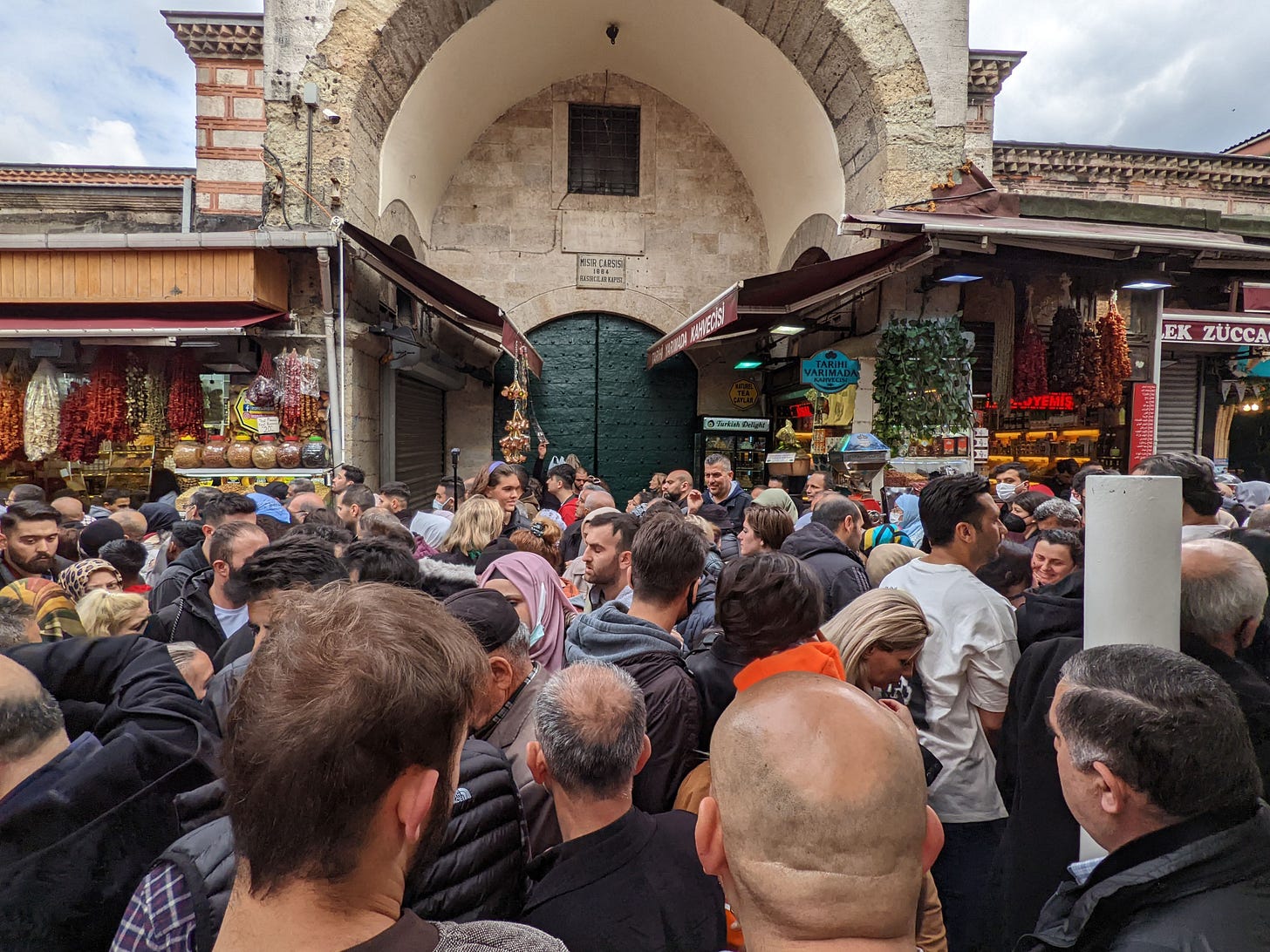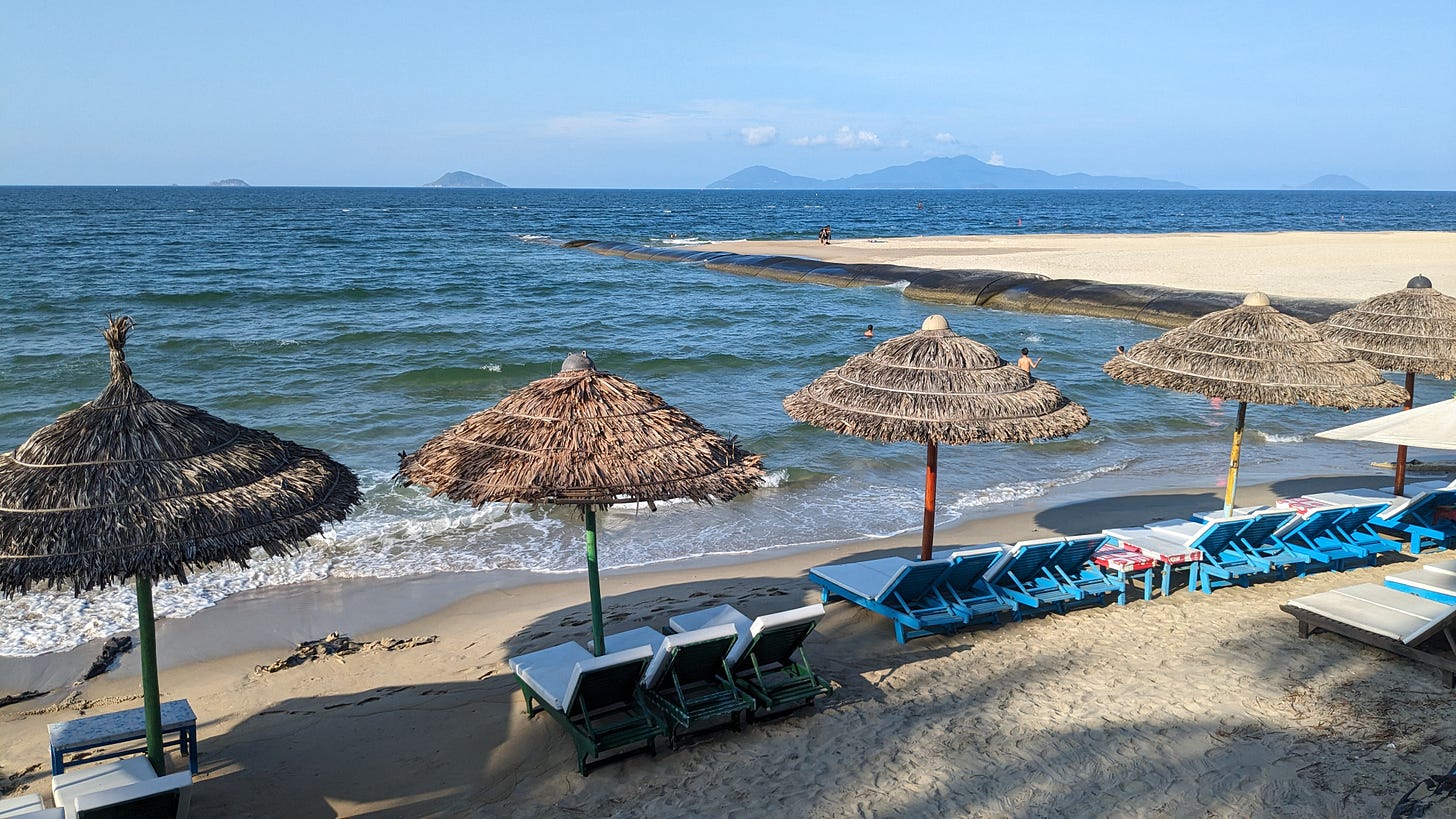What (and When) is "Shoulder Season?"
Timing and location are critical to a more comfortable stay!
Most of us have learned that there are four seasons each year: summer, fall, winter, and spring. But for travelers—especially nomads or full time travelers—they can be broken down into similar, but different, categories:
Tourist Season (summer)
Shoulder 1: fall
Winter (brrrr!)
Shoulder 2: spring
You may be unfamiliar with shoulder season, but for many (including us) it’s the best time to travel. The weather is nice, not too cold or too warm (the Goldilocks Zone), and demand is not so high (yet) to push up prices, which is why you should be selective about where you spend the “summer” season. And for this story, I’m using northern hemisphere summer, ie, June through August. For you Down Under folks, it’s opposite.
We discovered shoulder season in our first year of travel when we stayed in Italy, followed by Croatia. Leg number one began about April 1, and after six weeks in Italy we ferried over to Croatia for another six weeks, and discovered that we hit the “sweet spot” of ideal temps, and not that expensive—yet—nor that crowded. As our six weeks in Croatia moved along we definitely saw an increase in traffic come the middle of June. Over the years this has been a huge part of determining where we go, since weather dictates crowds as well as expenses, and since we don’t do “cold” anymore, we prefer the Mediterranean climates. And that is why so many travelers and nomads gravitate to the equatorial belt from Portugal through Spain, then on to Italy and Greece. It’s Econ 101: more demand= higher prices. That is one reason why we avoid “Western Europe,” since those countries are destinations for much of the world.
Who doesn’t want to go to France, Spain, Greece, Italy, Portugal, etc… in the summer? That is when school breaks affect when we travel, along with the somewhat typical six weeks work holiday. Following that line of reasoning is the “less popular” vs “more popular” conversation, which is why we like the eastern European Balkan countries, which I call Tier II locations. BUT, that is changing.
Many countries that used to be Under the Radar, like Croatia, Romania, and Albania, have gotten much busier just in our five years on the road. As the nomadic community has continued to grow, “they,” ie WE, find the less expensive areas. And unfortunately that drives prices up, so it’s an ongoing agenda to find the lesser known places before they get discovered.
Summer season is pretty obvious then, and the months from September to November (possibly longer) are sweet spots since the crowds are probably gone, and winter has not set in.
We were lucky in our first few years since we wintered in Greece, then Bangkok, then two years in Mexico due to COVID confinement. The following year was a reality check as we arrived in Croatia in October and left in December, then had to ask ourselves, “Where to now?” That answer was Antalya, Turkey, which we loved, but it was a bit chilly, bottoming out at just above freezing temps. We had our share of wind and rain and recognized that this was not our jam. The following winter was in Saranda, Albania which was a bit nicer, but still had some cold days.
Along with the fall season, spring is the best time to visit those areas that may be too crowded or busy come summer. In our particular situation, as much as we love Western Europe, it’s not enticing enough to spend the kind of money it takes to live there.
Aside from South America (been there, done that, probably not returning), Africa (STILL on my list since the weather is good and it’s affordable), or Australia (a bit pricey, but manageable for short stays), Europe and Asia seem to be the magnets for nomads. The two most significant footprints I have seen, places where people rotate amongst just a few countries, are the Balkans, and Southeast Asia (SEA). And we have been test driving Asia since last November, trying to find those four spots we can rotate between every 90 days, to get variety and avoid visa restrictions. One of the biggest advantages of SEA is that several countries allow border runs, so you don’t need to exit for 90 days, like Schengen, and you’ll never worry about needing cold weather gear.
Where are your “shoulder season” countries? Where’s your Sweet Spots? Please share; we’re all in this together.
By the way, please note that our newsletter will convert to a paid service later this month, but I will periodically send out less comprehensive free information. The price? Just $5.67 per month, or a one-time annual payment of $55, which is just over 20% off.
The first 50 subscribers (still available) will get a price of $50 for the first 12 months!
In addition to copies of several of my books, you will also get an invitation to my webinar on “Five Steps to Manifesting Your Travel Dreams,” and you will also get a FREE 15 minute video call with Travel Younger every calendar quarter, and you can ask your specific questions and address your particular needs.










